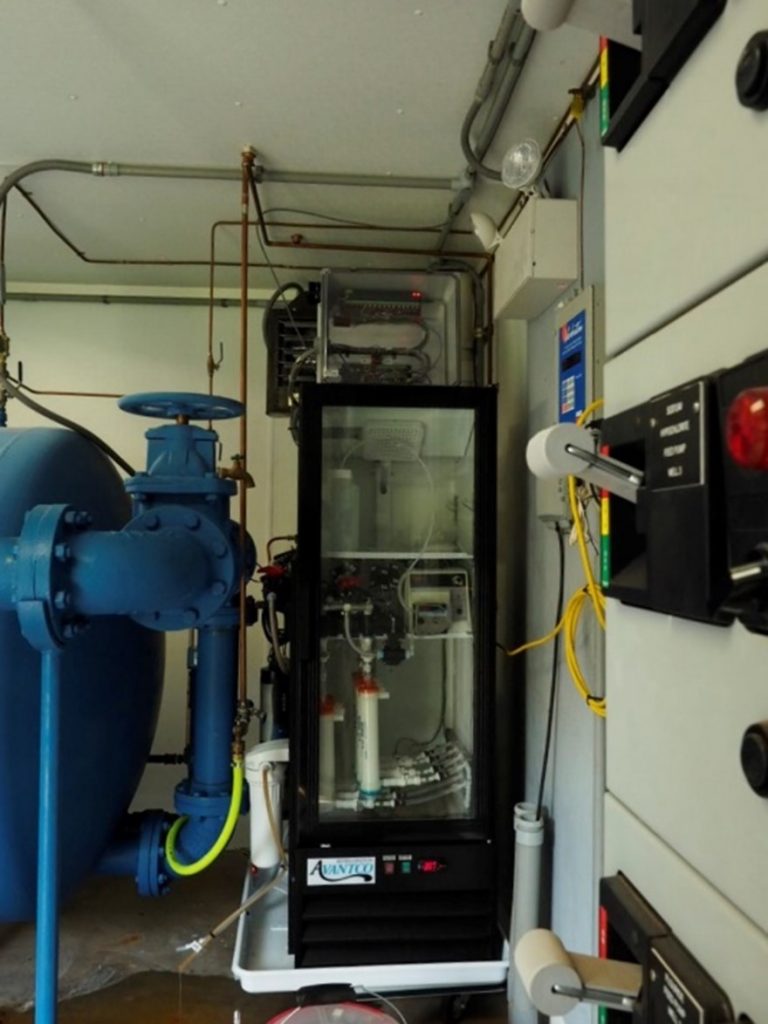by Jim Walsh, MDH
The Minnesota Department of Health (MDH) has been involved in studies looking at the occurrence of microbial genetic material in public water supply wells since directed to do so by the Minnesota Legislature in 2014. The early phases of the project involved bi-monthly sampling of 145 public supply wells distributed across the state from 2014-2016. The findings of those study phases revealed a surprising number of detections of microbial genetic material generally, and of cryptosporidium specifically (Stokdyk et al., 2019 and Stokdyk et al., 2020). More recently, efforts have focused on better understanding the sources of and pathways traveled by these microbes, as well as their timing with respect to recharge events. This is being accomplished in three broad tasks: 1) statistical analysis of hydrogeologic, well construction and land use/contaminant source information for insights into variables that might be associated with microbial occurrence, 2) tracer studies for confirming microbial sources and times of travel, and 3) a recharge monitoring study, that attempts to better understand the relationship between precipitation or snowmelt events and microbial occurrence in the subsurface. Each of these components is still ongoing, either in terms of active data collection or analysis, so no final summaries are yet available. Below are presented additional details on these tasks, as well as their status.
- Statistical analysis – To date, this project has focused on univariate analyses of many different variables related to the construction of study wells and their site hydrogeology, in addition to nearby potential sources of contamination and land uses. These variables are being compared with a number of different microbial outcomes (percent of samples with detections, sum of microbial or pathogenic genetic material, and occurrence of cryptosporidium or giardia). At this point a significant number of variables have been identified as being potentially important for assessing risk. The strongest variables will be carried forward into multivariate statistical models. These will be used to establish criteria for ranking public supply wells according to microbial risk. It is expected that this work will be completed in early to mid-2022.
- Tracer studies – Four of the public water systems that participated in the 2014-2016 study agreed to have tracer studies conducted on components of their wastewater or stormwater infrastructure, with the intent of determining whether those potential sources might be impacting their wells and over what time of travel. This work has been completed in cooperation with the Minnesota Department of Natural Resources tracer team. To date, no positive results have been noted, although several are still in the monitoring phase. These studies will be completed in early-mid 2022.

Figure 1. Salt and dye pours into stormwater and wastewater infrastructure.
- Recharge monitoring studies – In this task, four of the public water systems that participated in the 2014-2016 study were equipped with weather monitoring stations and automated samplers that could be triggered remotely in anticipation of, during and following rainfall or snowmelt events. At the same time, water quality parameters were recorded continuously, as were water level hydrographs from nearby observation wells. Microbial samples were also taken from nearby wastewater infrastructure for comparison with the well water samples. Microbial sampling occurred over 5-6 recharge events that spanned anywhere from 3-5 weeks duration. A total of over 400 samples were taken during a 12-month period that ranged from September 2020-September 2021. Only a small percentage of these samples have been analyzed to date, so no insights can be shared at this time. Like the other study components, final results are expected by mid-2022. This component of the study has been undertaken in cooperation with the USGS.


MGWA is committed to developing a just, equitable, and inclusive groundwater community. Click on the button below to read MGWA’s full diversity statement.